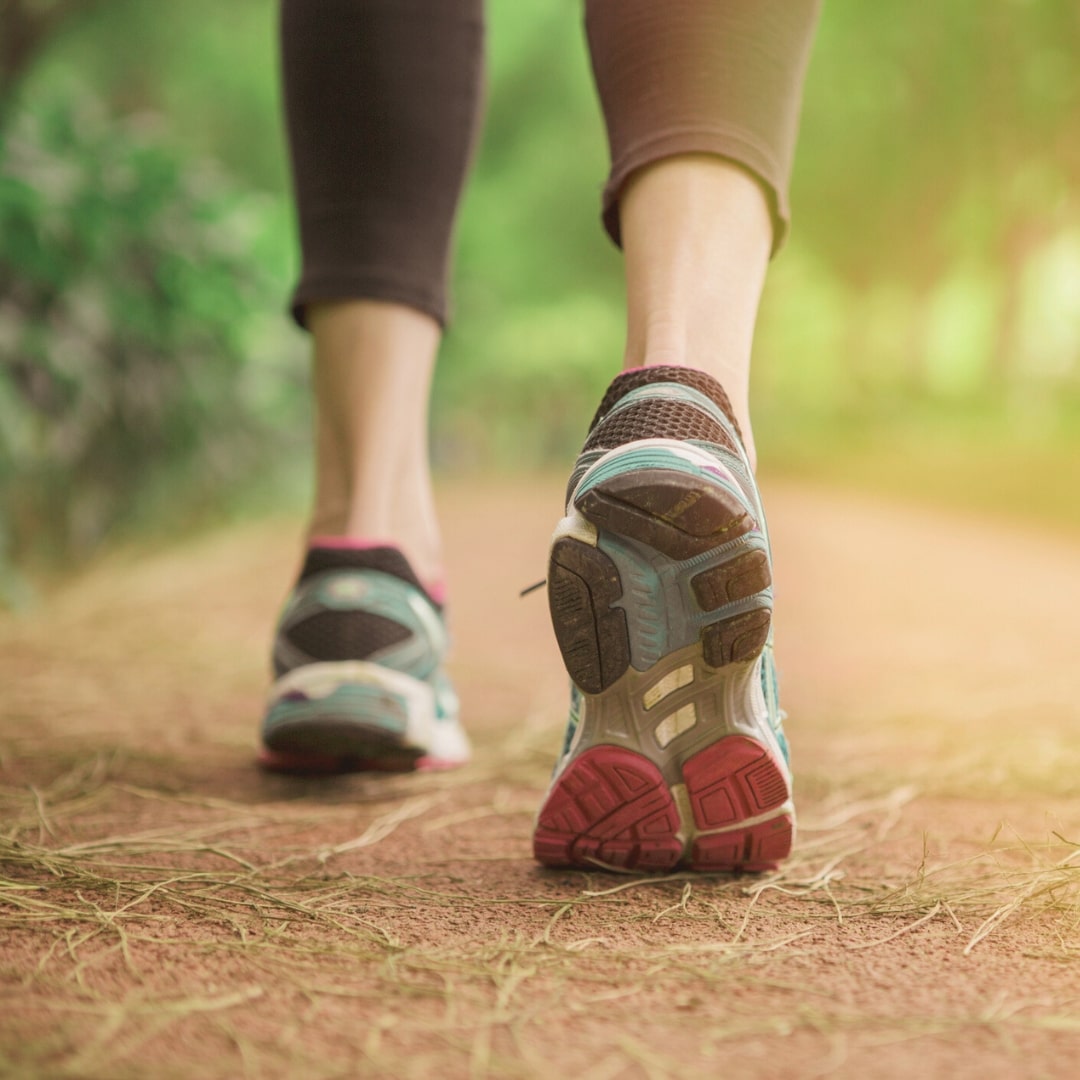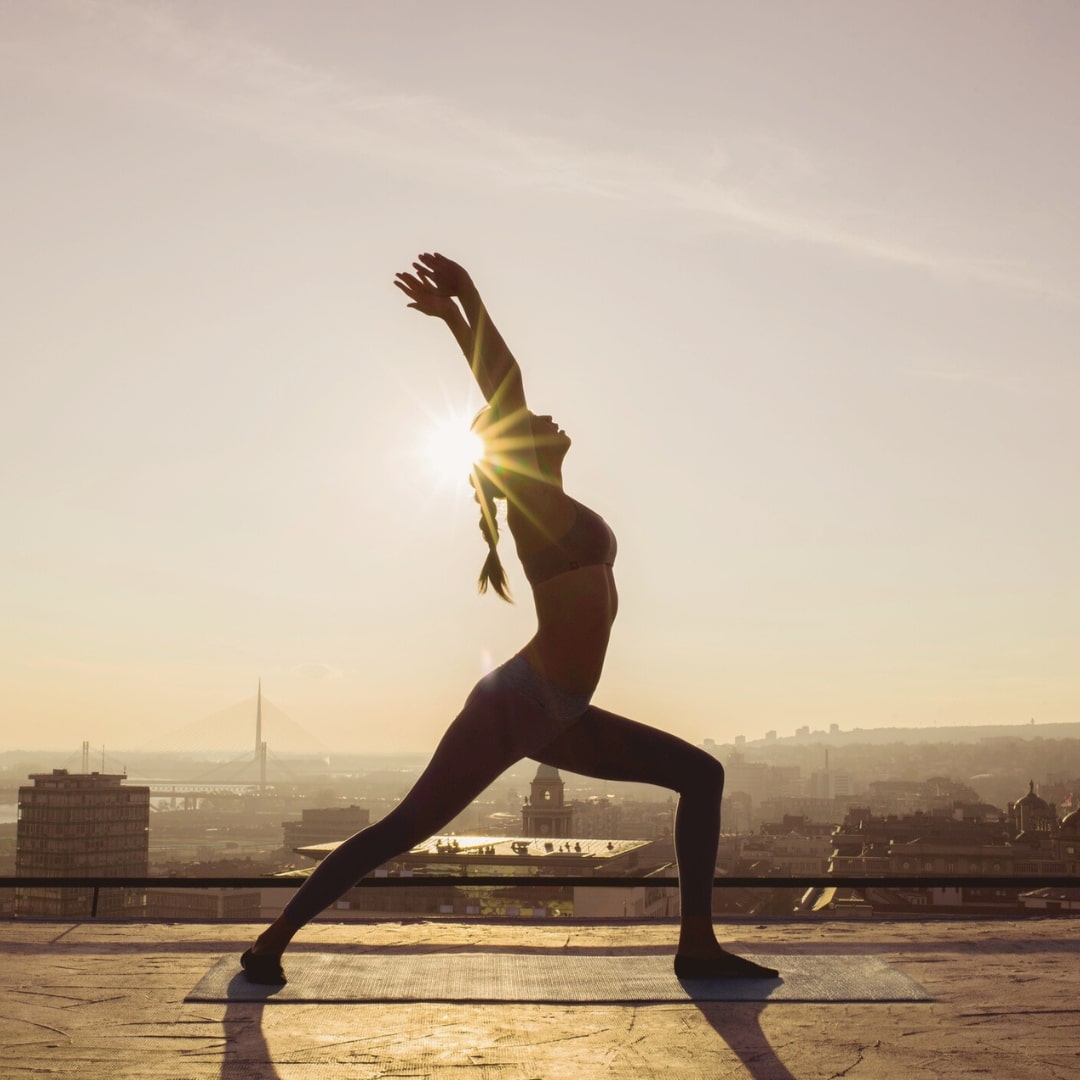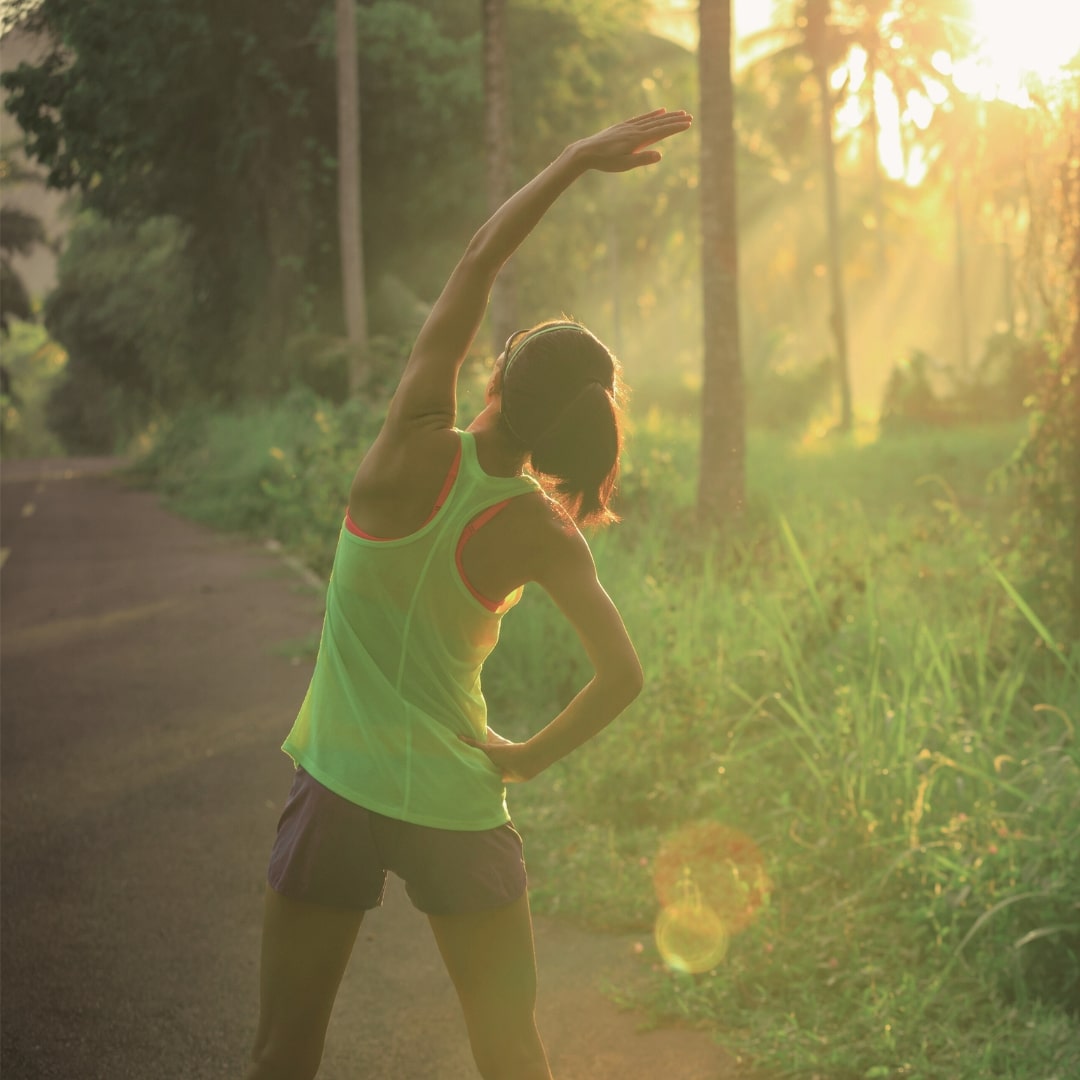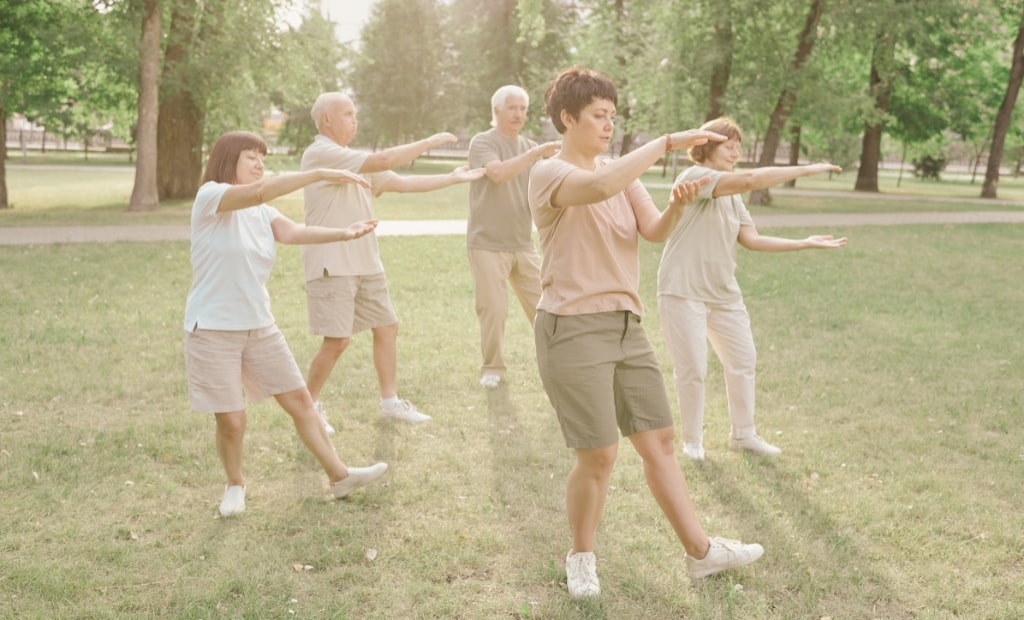I love practicing Tai Chi, simply because it’s a wonderful way to connect your mind to your body. Our bodies are vessels for our minds, but when life gets busy, we lose touch with that vessel and begin to drift through life, absent-minded, and confused.
A great way to reconnect and get in touch with your thoughts is to move your body. It feels good, is excellent for your basic body systems (like circulation and digestion), and it helps your subconscious mind build ties to your physical body.
Let’s find out more about why meditation is so important in today’s hectic world and why moving meditation is all the rage.
What Does It Mean to Meditate?
When you meditate, you focus your mind on specific thoughts, ideas, or actions. To do this, you can use different methods that assist in directing your mind, attention, and intention, such as breathing, chanting, and movement.
To meditate means you consciously choose to step off the rollercoaster of life for a few minutes, tune out the outside world, and let go of all the confusion that’s been clouding your mind.
It’s essentially a mental flushout, where you cast aside shameful and negative thoughts, contain intrusive thinking, and let your mind rebalance to the natural rhythms of your body.
Best of all, you don’t have to journey to the top of a mountain in some distant land or take a vow of silence for a month (living only on rice as an apprentice in a temple) to enjoy the benefits of meditation.
You can meditate right where you are, any time of the day, and without any special training.
All you need is a little basic knowledge, a bit of quiet (especially when you are new to meditation), and the space to move (if you choose movement meditation).
What is Moving Meditation?
Movement meditation is about moving the body slowly, in unison with your breath, letting your mind become consciously aware of every gesture, step, and extension of your body, limbs, and even organs as a way to train your brain to remain calm and connected.
Your body is active, but your mind has reached a state of inner calm and “emptiness.”
This form of meditation is not specifically about a particular movement, and the intention is rather to connect through daily movements instead of only trying to master a pose such as the downward dog or salute to the sun in yoga.

There are other forms of meditation too that can help you in rebalancing your mind. If movement meditation isn’t for you (or you perhaps struggle with free movement due to a physical challenge), you can try these meditations:
- Mindfulness Meditation: When you meditate with a focus on breathing and bodily sensations.
- Visualization Meditation: Using mental imagery, you clarify your thoughts and block out negative energies.
- Chakra Meditation: Meditating with a focus on the chakra points in the body and healing these.
- Loving Kindness Meditation: A meditation that focuses on kind and peaceful thoughts and intentions.
- Yoga Meditation: While this meditation also involves movement, it’s focused on specific yoga moves to reach a deeper spiritual path (by releasing the mind).
- Guided Sleep Meditation: For those with insomnia, a guided sleep meditation is specifically designed to help you calm your mind, disconnect from the day, and alter your conscious state so you can sleep deeper and more peacefully. Usually, this involves imagery and sensory stimulation (with sound).
How Can You Use a Moving Meditation?
Moving meditation should be practiced regularly to help your brain benefit from the routines and repetitions. If you only do it once in a while, it won’t be very effective in managing intrusive thoughts or anxiety.
Use specific movements in your day to help you engage in meditation without having to change anything or now add yet another chore to your already-busy day. Every movement, from cleaning your home to walking can become a meditative practice.
If you are physically able, you can learn about movements like Tai Chi, qigong, or yoga to help channel your meditation practice.
You can use moving meditation to help you focus, make the most of daily movements, and better unite your body and mind.
Benefits of a Regular Meditation Practice
Whether you choose a movement meditation or any of the other types of meditation, there are a host of benefits to regularly practicing meditation.
Physical Benefits of Meditation
- Improved heart health due to better breathing practices.
- Reduction of high blood pressure because of stress reduction due to meditation.
- Disease management, with conditions like fibromyalgia and diabetes improving.
- Improved immune responses.
- Reduced inflammation levels.
- Greater mobility with moving meditation.
Mental Benefits of Meditation
- Greater control over intrusive thoughts.
- Reduction of stress and anxiety that are caused by catastrophic thinking.
- Decrease in trauma-triggered conditions like depression, PTSD, and personality disorders.
As a whole, movement meditation benefits your health, mood, mental state, and emotional well-being.
7 Moving Meditation Exercises Guide
You’ve decided you want to dive into movement meditation. It’s going to take some practice, and remember that you may feel very out of sync when you start.
You don’t have to choose a specific movement type when you begin, and even something as simple as walking can be your introduction to movement meditation.
Let’s begin.
1. Walking Meditation
A walking meditation is, as the name hints, about walking purposefully and with attention to detail, letting your mind focus on one thing at a time until it regains some balance.
While performing a walking meditation, it’s essential that downward movements are accompanied by exhaled breath, while upward movements have inhaled breaths matching them.

As you move, you should focus only on the micro movement you are engaged in. There’s no fear that you are doing it wrong, that people will think you weird, or that you will fall.
Set aside all worries, and when you find thoughts intruding, you can simply concentrate on the next little movement.
Release intrusive thoughts and continue engaging your mind with your body. There’s no need to judge your thoughts or feel ashamed of them. Instead, you breathe and take the next movement.
The Technique:
To start a walking meditation, simply inhale deeply while gently stretching your frame upward to stand tall. Now pause, then exhale as you slide your right foot forward. As you inhale, you now lift the foot, letting it hover mid-step for a moment.
Next, exhale and lower the foot into the first step, pausing as the foot makes contact with the ground. Feel a quiet sensation as your foot stabilizes on the floor as your weight is shifted onto it with a gentle roll of your hips.
Continue breaking down each movement into micro movements, pausing frequently, and inhaling as you lift a limb, pausing as you shift from an upward movement to a downward movement, and then exhaling when you step down.
Swing your arms as you walk in slow motion. Your thoughts should be focused on the sensations your body experiences as it moves at a snail’s pace. Become aware of breath, your foot taking pressure, and your hips swinging between strides.
Top Tip: For an even better meditative effect, try your walking meditation on the lawn outside without shoes. Grounding helps improve your health and mental state, so kick off your sneakers and get some grounding going.
2. Yoga Movement Meditation
You likely think of yoga as being a stationary position, but the movement between different yoga positions is where the meditation really becomes valuable.
The transition from one pose to the next helps your body move, and your mind becomes quieter when you focus on what’s involved in merging from one pose to the next.
The Technique:
Start in a clear space with a yoga mat to stand or sit on. Wear comfortable and stretchable clothes so you have freedom of movement.
Inhale deeply, letting the breath fill your body, expanding from your lungs into your cells. Hold the breath for a moment, then exhale slowly, emptying all of your lungs.
Stand with feet hip-width apart, hanging your arms comfortably at your sides with your shoulders square. You are now in the mountain pose. Breathe deeply, anchoring your feet to the floor. Begin the salute to the sun movement.
Repeat 5 – 10 times.
Now progress to the standing balances such as the tree, warrior, and triangle. Focus your mind on the postures, the straightness of your back, and the power in your body. Choose some yoga books to help you expand your movement types.
3. Qigong
If you like a little fantasy, qigong is perfect for you.
This practice of meditation uses the movements of animals like the tiger, geese, and dragons to encourage movement, suppleness, and coordination in the body, while forming a deeper mental connection through focus and meditation.
The Technique:
Start by standing with your feet balanced hip-width apart. Breathe consciously, exhaling when you move outward and inhaling when you return to your center point. Always move slowly, focusing on the quality of the movement and breathing.
Inhale and push your hands upward, palms down until your hands are level with your heart, then turn them outward. Stretch up to the sky, exhaling slowly and deeply. Return your hands to your sides and repeat.
Other movements in qigong include “pulling the bow,” “parting heaven from earth,” “wise owl gaze,” and “the fierce tiger.” Remember to think of qigong movements as being rounded in shape.
4. Tai Chi
A very popular movement meditation is Tai Chi. You’ll find group gatherings practicing Tai Chi in public parks and at health centers across the world.
The benefits of this traditional meditative movement are immense, especially for those who are limited in their range of movement.

The focus is to move slowly, in balance, coordinating movement and breath while emptying the mind.
It’s no surprise that Tai Chi is said to improve cognitive powers and delay mental decline.
The Technique:
Start by placing your feet hip-width apart. Focus on your breathing, letting your body relax, rounding your arms and legs with a slight bend as you move. Never force or tighten muscles as you move.
Like qigong, the moves are inspired by animals or martial arts movements. The use of Tai Chi balances energy or qi in the body. By focusing on balance and core strength, Tai Chi helps your mind find a centered focal point, which makes intrusive thoughts virtually impossible.
In Tai Chi, you will have movements such as the “empty step,” where your limbs move in a fluid motion without carrying the weight of your body. Even walking with this method can have a significant impact on your mental clarity.
Simply center, focus your breathing, and step forward with one leg, placing the unweighted foot into the new position before transferring weight to that foot in an even flowing motion.
This step is what lies at the core of most Tai Chi movements. It’s about positioning, focusing, and then moving, all in a flowing motion that’s directed at intentional thinking.
5. Dance Meditation
You may find dancing counterintuitive to the idea of meditation, but you can move in dance and meditate. Now, before you grab your partner and start to salsa, this is a dance movement that’s performed alone, and definitely not in the local dance clubs.
Dance meditation is about movement, repetitions, release, and internal focus. The important goal is to move without judgment, while becoming more and more aware of your body moving through space and against itself.
The Technique:
To meditate while dancing, you direct your mental awareness to your body. As you move (and you can use any music or rhythm for this), your mind will notice your body swaying, your muscles releasing and moving, and the shifting of weight between steps and turns.
There are no hard and fast rules, and with dance meditation, anything goes. Just remember to breathe, and when you feel insecure or like you want to judge yourself, let those intrusive thoughts go by exhaling powerfully.
6. Intentional Cleaning
Who knew that meditation can clean your mind … and your house? Yip, you can meditate while performing mundane tasks like sweeping, mopping, vacuuming, dusting, and more.
The goal is merely to move and direct your awareness to the act of cleaning (not how dirty your home is or how poorly you dusted).
There’s no real technique, as long as you create awareness of movements, bodily sensations, and deeper mental focus.
Keep your movements flowing and repetitive, whether you walk, dust, or wipe surfaces, and this is a great opportunity for gratitude affirmations too.
7. Intentional Stretching
Your body loves to stretch. It’s the first thing we do in the morning.
Now become a little more focused and aware while stretching. Again, there are no real moves or routines in this meditation.
Merely keep your body limber by gently stretching as you move through your day. From pressing the elevator button to pushing the shopping cart, you can lengthen muscles and empty your mind at the same time.
Final Thoughts on Moving Meditation
Meditation is about uniting your body and mind, cutting out intrusive thoughts, negative energies, and bringing better mental clarity under your control.
Moving your body while meditating makes sense, especially if you’re one of those people who begin to fidget when sitting still.
Moving meditation is ideal for a busy life, helping your mind empty and quiet down. Aside from the physical benefits, your life will begin to balance and become clearer when your mind flows with your body.
Combine meditation and movement of the hand by trying out journaling for stress release, inner calm, and intentional living.
And if you're interested in more articles about mindfulness and life, be sure to check out these blog posts:
- 15 Mindfulness Activities for Adults
- 17 Mindfulness Activities and Exercises for Teens
- 7 Ways to Get Out of Your Head & Back into Reality
- 15 Reasons to Live When Everything Seems Hopeless
- 50 Mindfulness Mantras to Quickly Shift Your Mindset
- 7 Ways to Stay Calm When Life is Spiraling Out of Control
Finally, if you want a simple way to reduce your stress and anxiety, then try writing these 35 mindfulness journaling prompts to live more in the present moment.


